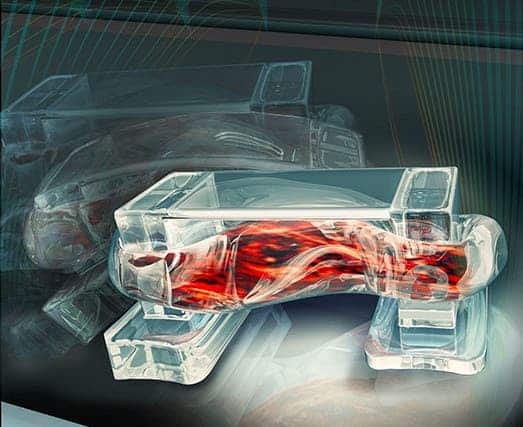
Rashid Bashir, the head of bioengineering at the University of Illinois at Urbana-Champaign, is one of the pioneers leading a new field of robotics which deals
with bio-bots. These tiny robots, less than a centimeter in size, combine biological and mechanical components to meet a certain purpose. Recently, Bashir and his team demonstrated a bio-bot that’s powered by muscle cells and controlled with electrical pulses, giving researchers unprecedented command over their function.
Biological machines are making their first baby slides
Previously, the team demonstrated bio-bots powered by beating heart cells from rats. Unfortunately, heart cells introduce a lot of limitations because the cells constantly contract. Desirably, you want full control over your bio-bots, including an on-off switch.
The latest version uses a strip of skeletal muscle cells, backed by 3-D printed hydrogel structure. Together, they form a bio-bot similar to the muscle-tendon-bone complex found in nature, which can be activated by electrical impulses. This gives the researchers a simple way to control the bio-bots and opens the possibilities for customize bio-bots for specific applications.
“Skeletal muscles cells are very attractive because you can pace them using external signals,” Bashir said. “For example, you would use skeletal muscle when designing a device that you wanted to start functioning when it senses a chemical or when it received a certain signal. To us, it’s part of a design toolbox. We want to have different options that could be used by engineers to design these things.”
The video below shows how the muscle-driven bot works and behaves. To speed it up, the researchers only had to adjust the frequency of the electric pulses. A higher frequency causes the muscle to contract faster, thus speeding up the bio-bot’s progress.
These bio-bots might not seem like very much, but they’re the first in a new generation of biological machines that could aid in drug delivery, surgical robotics, ‘smart’ implants, or mobile environmental analyzers, among countless other applications. According to the team involved, future versions will integrate neurons so
the bio-bots can be steered in different directions with light or chemical gradients.
“This work represents an important first step in the development and control of biological machines that can be stimulated, trained, or programmed to do work,” said said graduate student Caroline Cvetkovic, co-first author of the paper.
Was this helpful?



